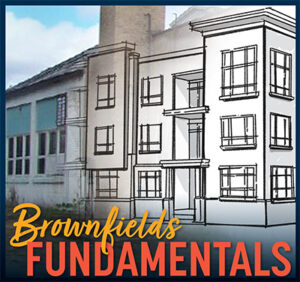The U.S. Environmental Protection Agency (U.S. EPA) is now accepting applications for FY25 Brownfields Multipurpose, Assessment and Cleanup Grants. The deadline for applications is Nov. 14, 2024.
Visit the U.S. EPA’s FY25 Brownfields MARC Application Resource webpage for grant information, requirements and other valuable resources such as:
- A new resource for state/tribal environmental authorities: FY 2025 Cleanup Grant sample site characterization letter template
- Pre-recorded videos to provide an overview of the FY25 grant application submission
- Dates and links to webinars on grant ranking criteria
- Tips and ideas for grant proposals
Grants offered by the U.S. EPA Brownfields Program may be used on various brownfield activities, with an opportunity to transform contaminated sites into community assets that attract jobs and achieve broader economic development outcomes.
Wisconsin State Acknowledgement Letters
If your community or organization intends to apply for an FY25 MAC Grant, the EPA requires grant applicants – except tribal entities – to obtain a state acknowledgement letter from the DNR. The letter acknowledges that the state is aware of the community or organization’s application for a federal grant and intent to conduct brownfield assessment or cleanup activities.
Requests for a DNR acknowledgement letter are due by Oct. 25, 2024. Send written requests for state acknowledgement letters to Molly Schmidt at MollyE.Schmidt@Wisconsin.gov no later than Oct. 25, 2024, to allow adequate time to draft and receive the letter prior to the U.S. EPA’s application deadline of Nov. 14, 2024. More information about state acknowledgement letter requirements is available on the DNR Federal Brownfield Grants webpage under “DNR acknowledgement letter.”
On-Demand Webinars Share Brownfields Fundamentals
Interested in learning how cleaning up brownfields can help your community? The DNR’s series of on-demand Brownfields Fundamentals webinars cover brownfields planning, cleanup, liability and other topics as part of a well-rounded crash course in Wisconsin brownfields redevelopment. Topics include:
Brownfields Fundamentals on-demand webinars are available on the RR Program’s Presentations and Trainings webpage.

 The Remediation and Redevelopment (RR) Program provides up-to-date and quality presentations and trainings on a variety of technical and educational topics for environmental professionals, local governments, community organizations, members of the public and others.
The Remediation and Redevelopment (RR) Program provides up-to-date and quality presentations and trainings on a variety of technical and educational topics for environmental professionals, local governments, community organizations, members of the public and others.